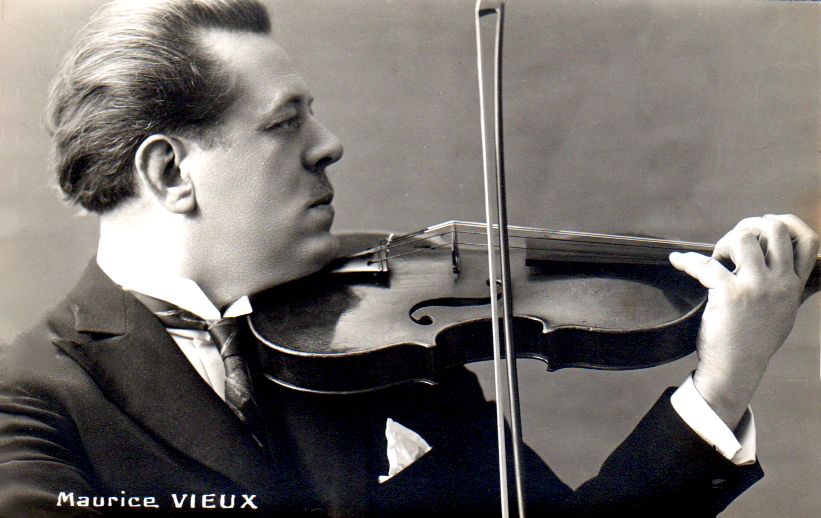This bow was displayed in the Colonial Exposition held in Paris at the Bois de Vincennes in 1931, which drew millions of visitors. These commercial exhibitions had started in France at the end of the 18th century and were designed for the French arts and craft industry to show off its capabilities. J.B. Vuillaume and Eugène Sartory took part in these more than anyone else in the violin making industry.
It seems that the bow was a gift to the violist Maurice Vieux, as shown by the dedication engraved on the ferrule: ‘A Mce Vieux, Estime et reconnaisance’ (see our previous feature about Vieux). Dedicating bows was a great tradition throughout the 19th century, and Sartory dedicated quite a few of his to musicians, always using the same (unknown) engraver in Paris. Queen Elisabeth of Belgium, who knew Sartory through Ysaÿe, is known to have commissioned dedicated Sartory bows as gifts for the musicians she played with. We’ve found letters at the Belgian embassy in Paris requesting bows by a certain Sartory, to which the ambassador responded with some panic: ‘Indeed there is a bow maker named Sartory but he currently is in Saint Tropez and unreachable, so we cannot access to Her Majesty’s request.’

The French violist Maurice Vieux, who owned the Sartory bow until his death in 1951. Photo: courtesy Jean-Claude Vieux
There are two reasons a bow maker becomes successful. Firstly, consistency in quality. Unlike Voirin, who made some extraordinary bows but also some that are too light, Sartory is very consistent – it’s very rare to find a bad Sartory. Although he employed various excellent bow makers, including Louis Morizot pere, Louis Bazin, Louis Gillet, and Jules Fetique, he always demanded his own standard of quality. One can see some variations in the work, but the quality is always very high. Secondly, the volume of production. Picasso produced three paintings a day; Sartory produced three bows a week. This was an enormous production and, like Stradivari, it’s the sheer volume of excellent bows that led Sartory to such high recognition.
Picasso produced three paintings a day; Sartory produced three bows a week. This was an enormous production
Sartory studied with his father in Mirecourt, then with his uncle, André Vigneron, in Paris. Unusually, he established his own shop aged just 18; seemingly he had already reached a maturity of style despite his youth and decided to set up on his own. He was very traditional in his approach to bow making, while still making bows according to the tastes of his time. The modern music of the 20th century demanded more rigid bows, which is what Sartory produced, while keeping a classical approach to making. Around 1930 his bows become stronger and more powerful, as can be seen in this example.
